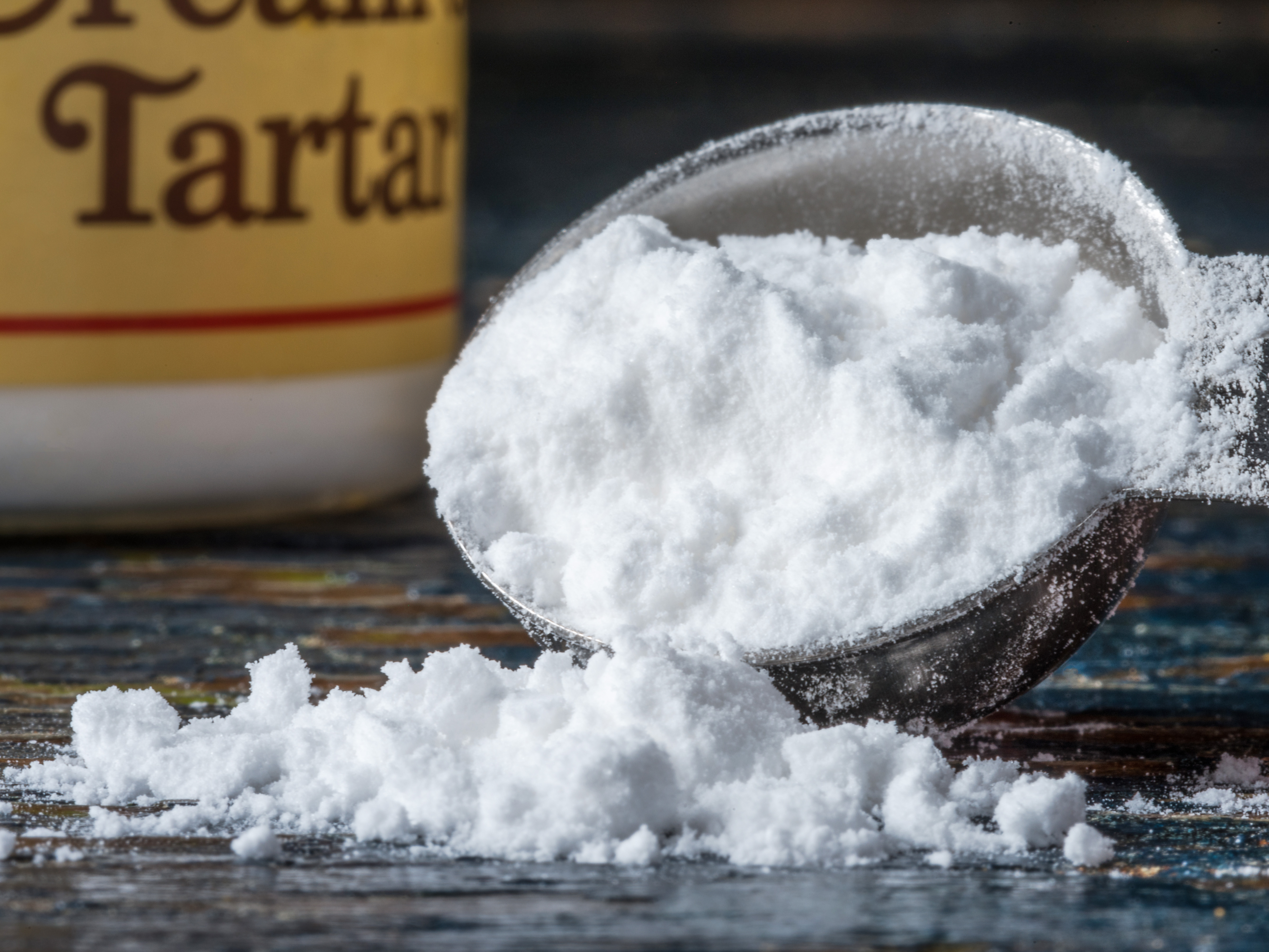

How do I substitute cream of tartar for baking soda Cream of tartar is actually one of the primary ingredients in baking powder. If it fizzes and froths up energetically, it's fine. To make 1 tablespoon baking powder, mix 2 teaspoons cream of tartar with 1 teaspoon baking soda (add 1 teaspoon cornstarch if you’re making a big batchit prevents the mixture from caking, but it’s not necessary). (By the way, here's a way to test whether your baking powder is still good: Boil half a cup of water and add half a teaspoon of the baking powder to it. When using cream of tartar with baking soda to replace phosphorus-containing baking powder, be aware the potassium content of food will be higher but phosphorus is much lower.

Adding an acidic ingredient in the form of a dairy product to the baking soda helps to recreate the rising effect of baking powder. Cream of tartar is the potassium acid salt of tartaric acid, which is a by-product of wine making. It is also a buffer to keep the acid base reaction from happening prematurely. If you dont plan to use it right away, you will want to add some cornstarch to keep it from clumping. This mixture can be used in place of 1 tsp. To make baking powder using baking soda, combine two parts cream of tartar (potassium bitartrate) with one part baking soda (sodium bicarbonate). Check the labels of your local brands to see what secondary raising agents they add. of baking soda with 1/2 cup of buttermilk or plain yogurt. Please note that there are also aluminum-free commercial baking powders on the market: one of them (in North America) is Rumford. To make larger quantities, just increase the amounts in proportion. To make one teaspoon of commercial baking powder, mix together:ġ/4 teaspoon cornstarch (cornflour, for UK bakers) When you make your own from scratch, in small batches, you know it's going to work right every time. (The "double action" comes from the addition of sodium aluminum sulfate, which causes the powder to react more slowly to heat, as in the oven.) With this in mind, why not try making your own baking powder at home, from scratch? This home-made single-acting baking powder won't behave much differently in your baking than the double-acting type does.Īdditionally, homemade baking powder gets around one of the main problems with the storebought stuff: it stops working over time. Many commercial double-acting baking powders in the US contain small amounts of aluminum. (Except maybe in the baking pan or tin on the outside: and again, that should be your call.) While nothing about the connection has been conclusively proven as yet, there seems to be no harm in eliminating aluminum from places where it doesn't really need to be. A lot of people are nervous about a possible connection between aluminum / aluminium and Alzheimer's disease.


 0 kommentar(er)
0 kommentar(er)
